Well at medieval events over here in eastern Canada I seem to be the firewood guy. Most medieval reenactors over here fall into some pretty tight categories. The geek and intellectual sort who use keyboards for a living and are not so great at manual labour. The army guys who just like to fight and hit one another, and are too sore and injured for manual labour, and the artisan types who say things like; "Damnit Jim, I'm a lute maker not a lumberjack..." who just refuse to do manual labour unless it is for lute making.
Then there is me...
So at far too many of these medieval reenactment events I get tasked with doing the firewood and I end up taking out my Silkie Big Boy saw complete with blaze orange handle and cutting up the firewood in a non-medieval way. Well at least with a non-medieval tool; it is not like I used a chainsaw or anything.
I decided I needed a medieval saw that was more appropriate and so started the research. Come to find out they have been around for ever and according to the manuscripts they look pretty much like a tensioned buck saw. Well that is a pretty easy build so I may as well make an adventure of it. I wanted my saw to look like the medieval equivalent of the saw owned by the guy that found a used blade abandoned after the black death and not the exquisite wood working tool owned by that master lute maker that will not help me do fire wood.
I was not interested in making a blade for scratch. Medieval saw blades had the common or "M" tooth pattern so are easy to make with a triangular file, but it would cost way more and take vast amounts of time to make one. I just picked up a 24 inch buck saw blade made by Stanley Tools. It was $6Cdn and will work far better on firewood and will never be used for lute making.
So let the adventure begin and lets try to do what medieval guys would do and it does not involve a trip to the B&Q or Home Depot. I went to the woods to look for a dead standing white ash tree.
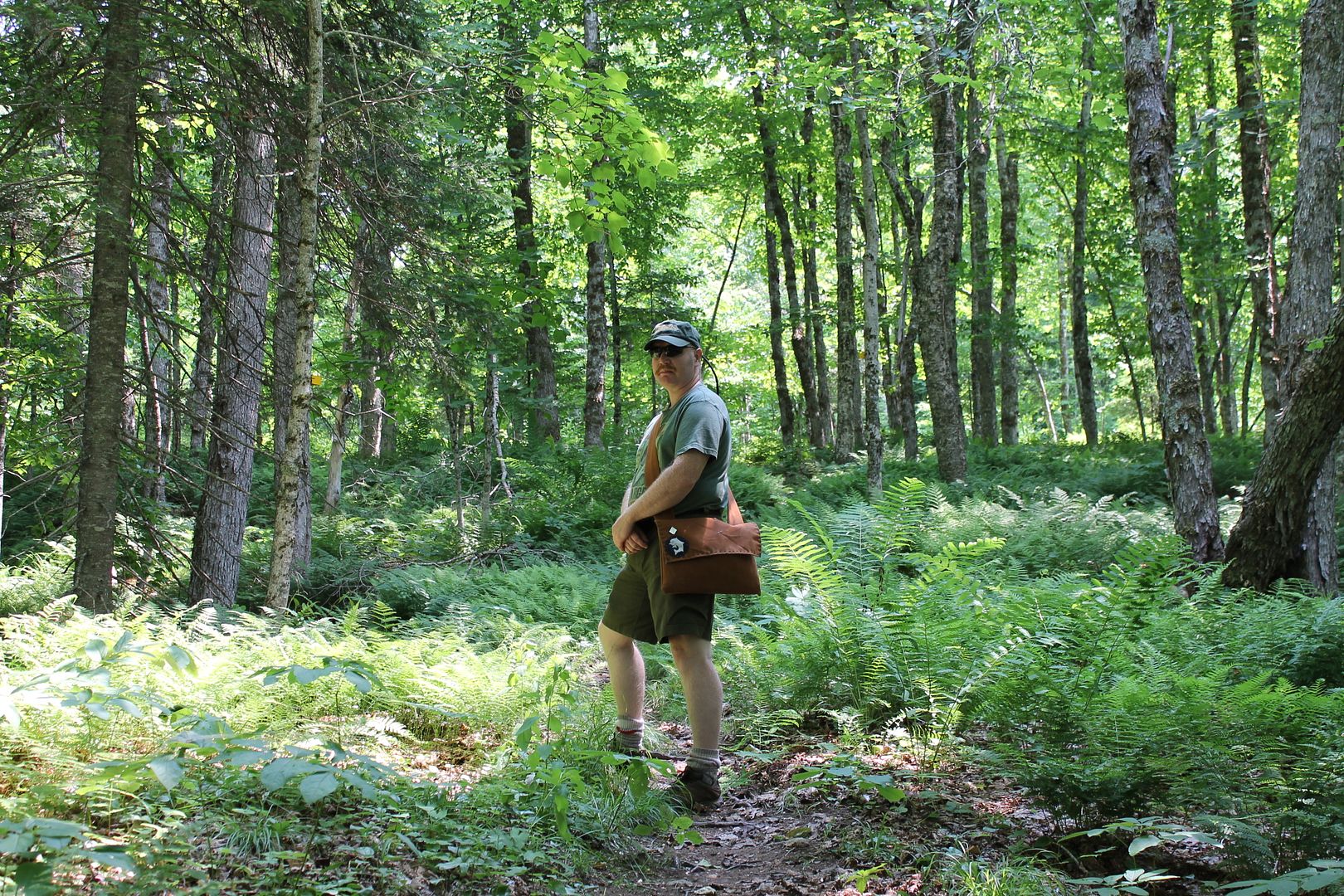
Found some interesting things on my way into the hardwood stand

I found my dead standing Ash tree. It was tucked in behind a living ash tree that was considerably larger.
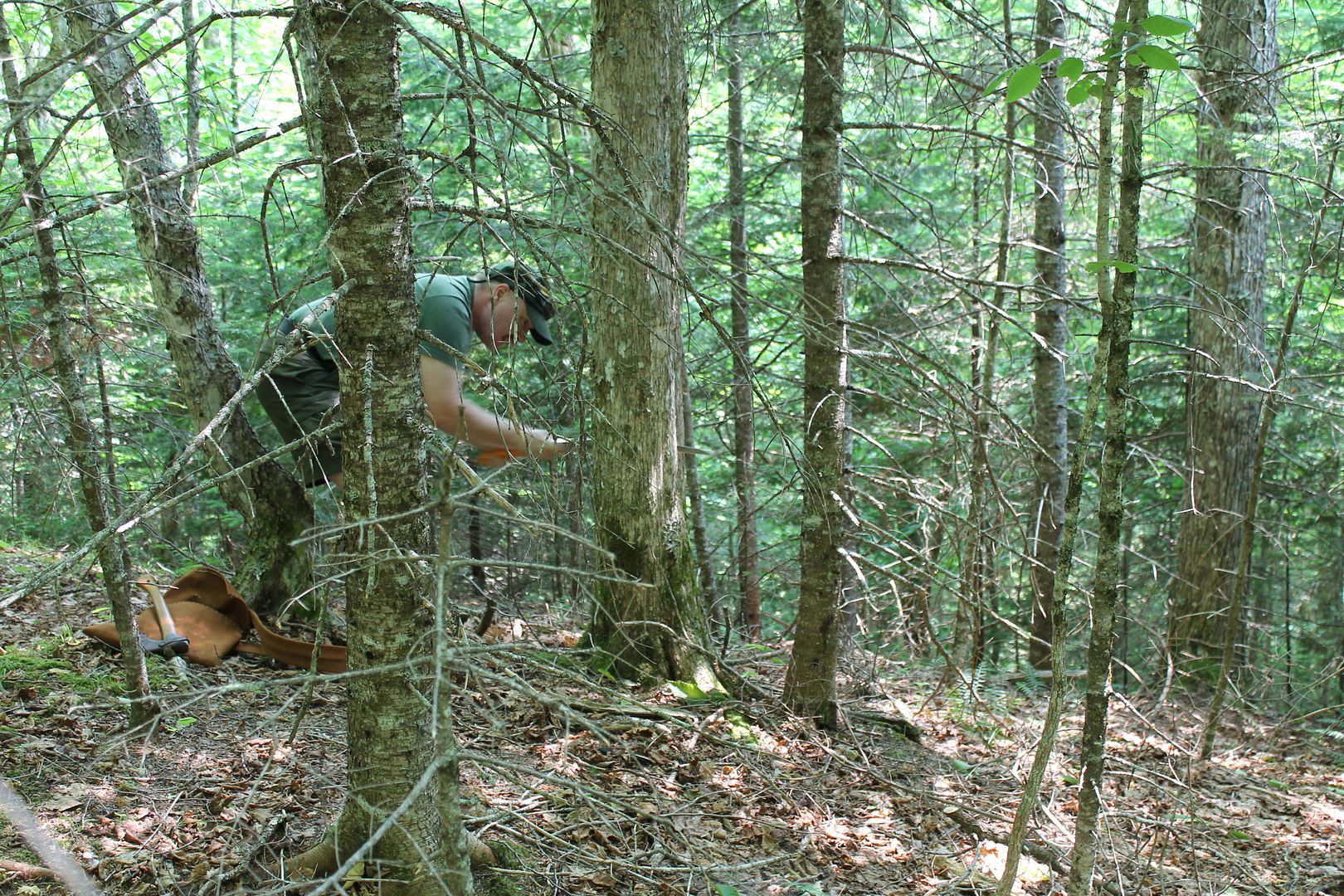
Hunter is pretty happy to be out on an adventure although less interested in doing any work.
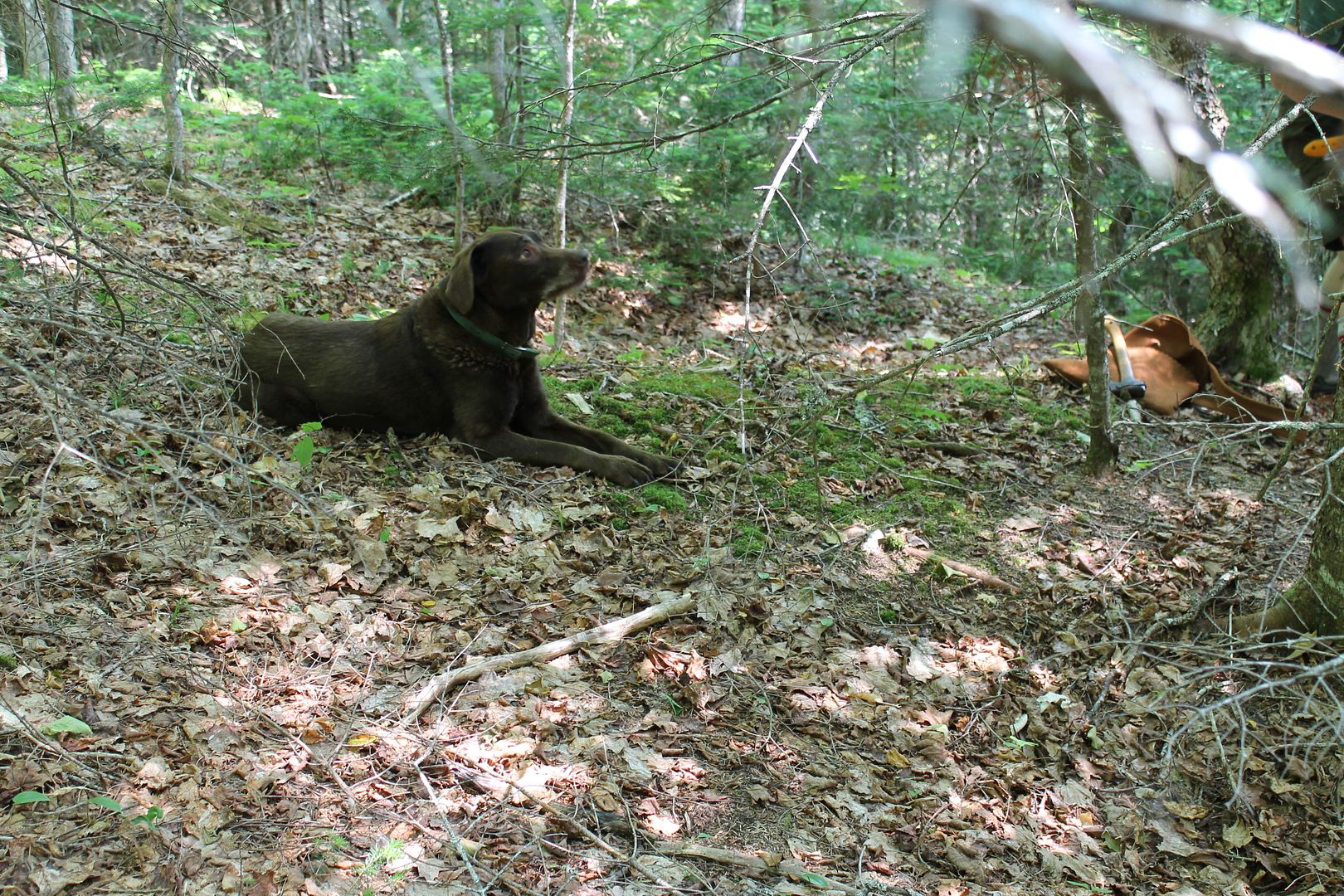
Some days it would be nice to have a pack horse but on the positive side I can hike the few miles out and get rid of some winter fat. The 4-5 logs do not weigh much anyway and the extras will become tool handles. There may be a longbow in one of them at some point though.
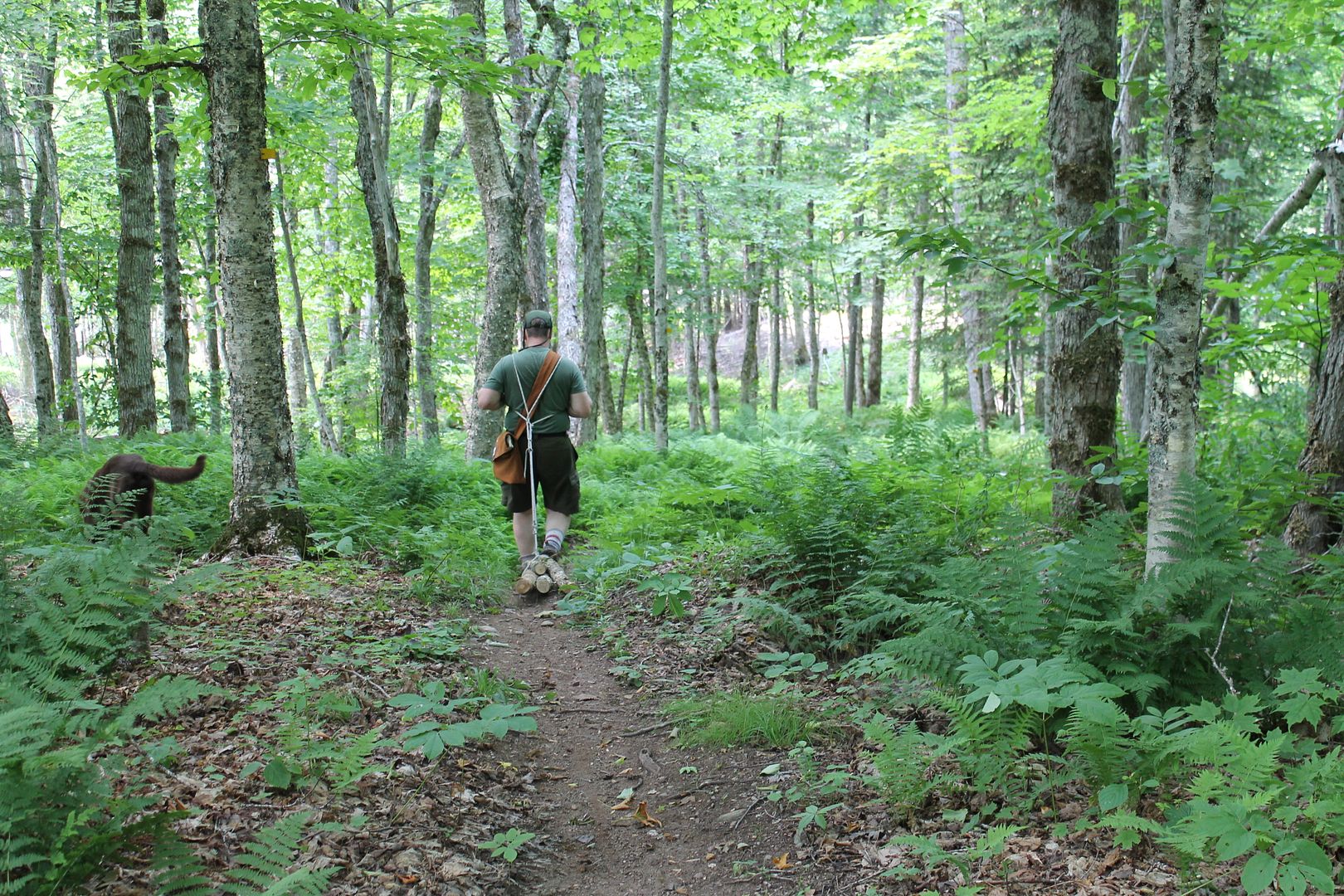
So cut down to manageable lengths, the axe work begins.
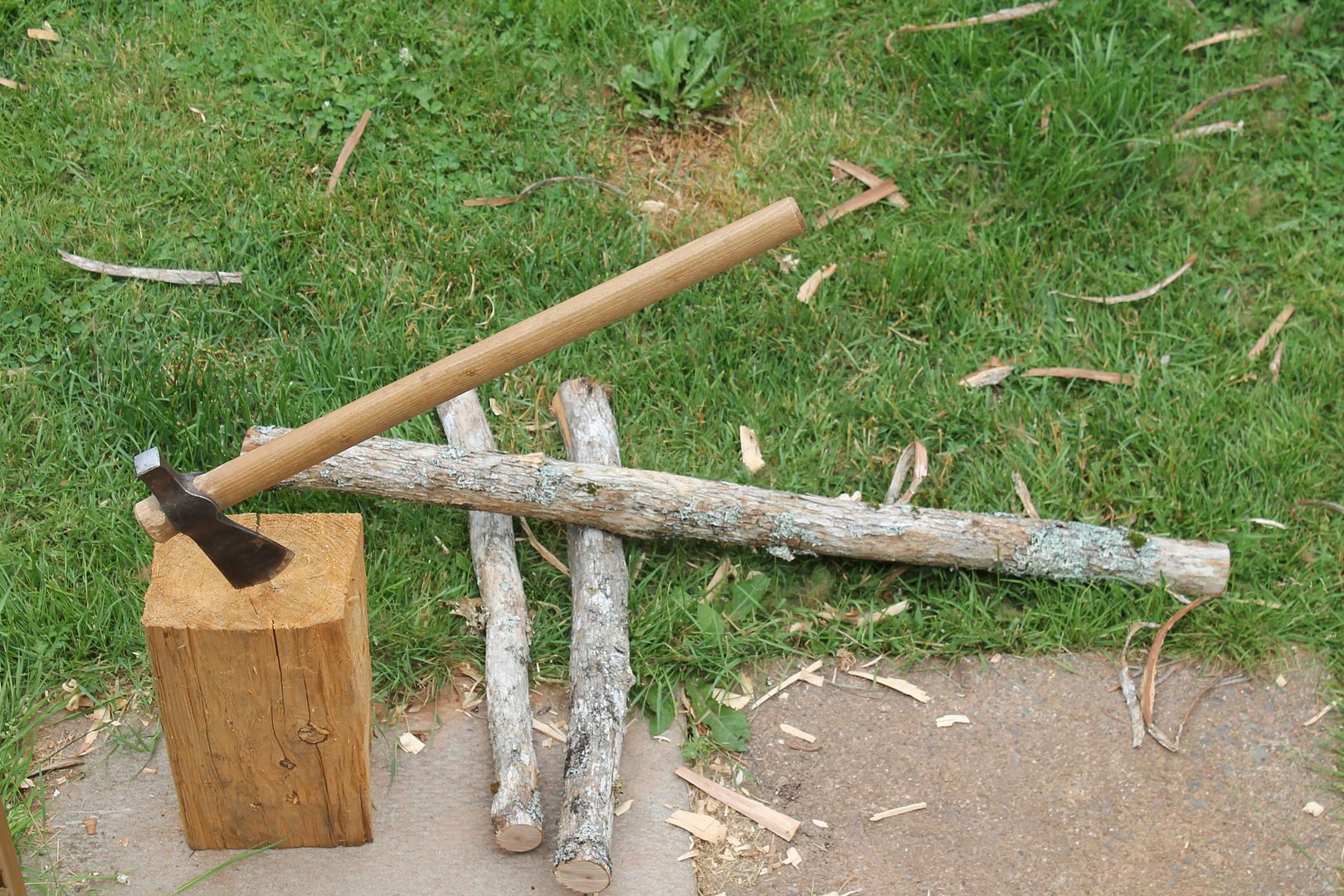
All the free hand axe work is done by eye and low spots for curves are left until last when a flat surface sort of emerges from the wood.
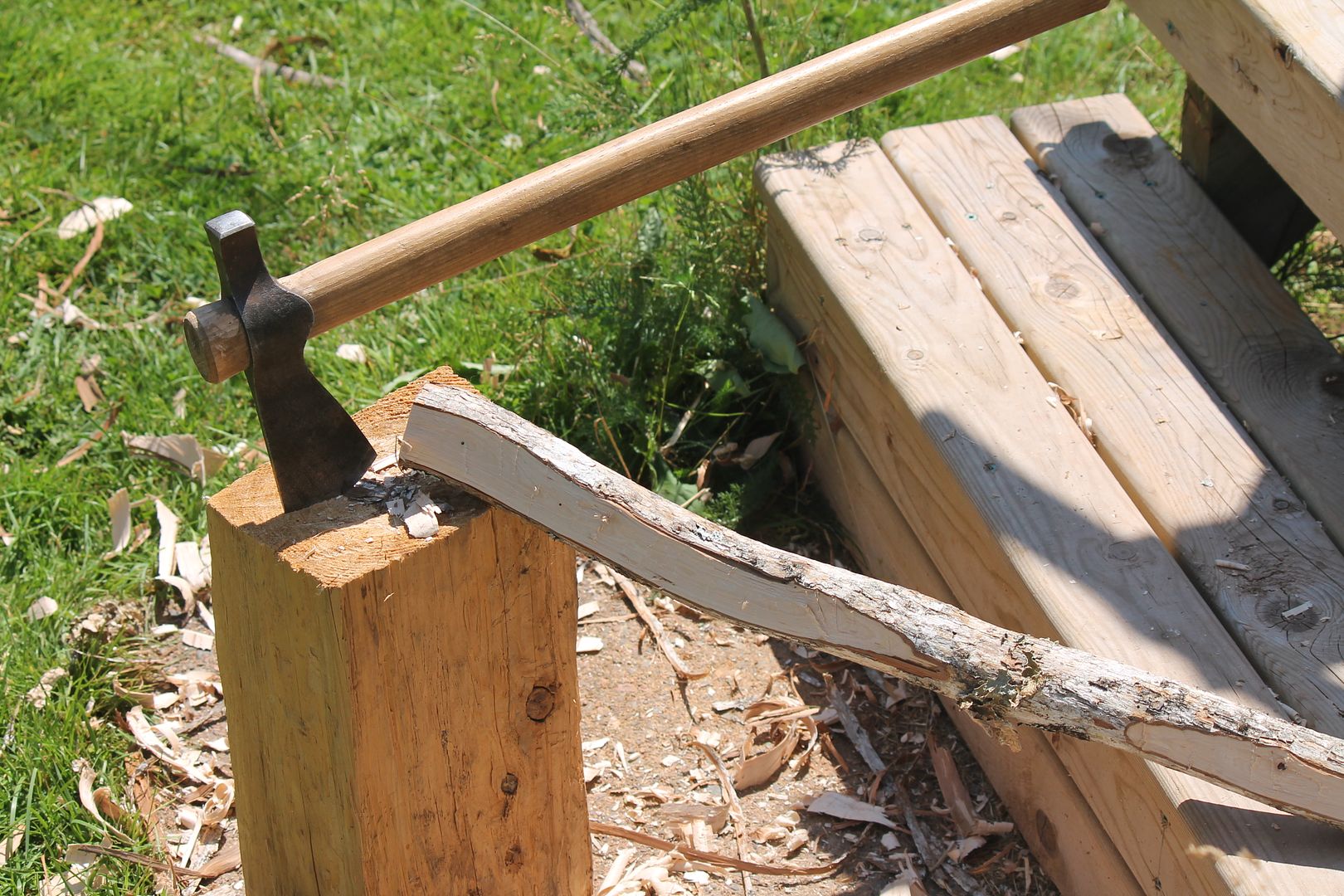
After a bit of time, the wood begins to look like something approaching a piece of kiln dried store bough timber. A thickness plainer at this point would be a real bonus but I do not have one.
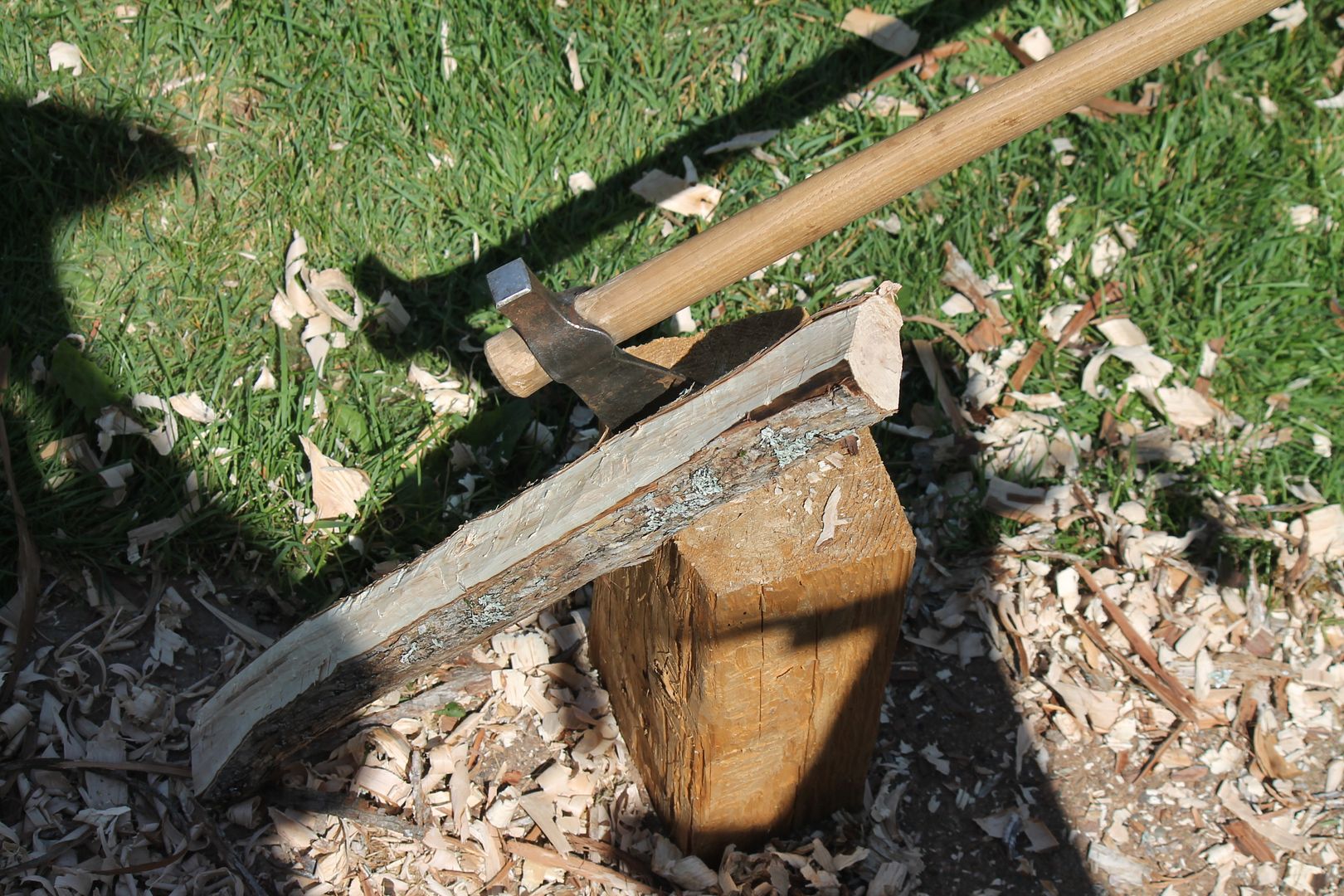
Bar clamped to the rail on the back deck I cleaned up the roughed out wood with a draw knife and then made some finer cuts and curves with a farrier's knife. I quite like them for debarking and using them as a scraper.

I cheated and used a power drill to pilot the holes for my joints (my auger is too big and is for making barns) and carved them out with a small carving set. They need to be loose or the tension will wreak havoc upon them. I also neglected to take photos of the process as it is tedious and not very enjoyable to me.
However after it was all carved out and the blade pinned in, I used a piece of sisal rope and back braided loops onto each end. The two loops go over one end and this gives two pieces of rope to slide the twirly stick through.
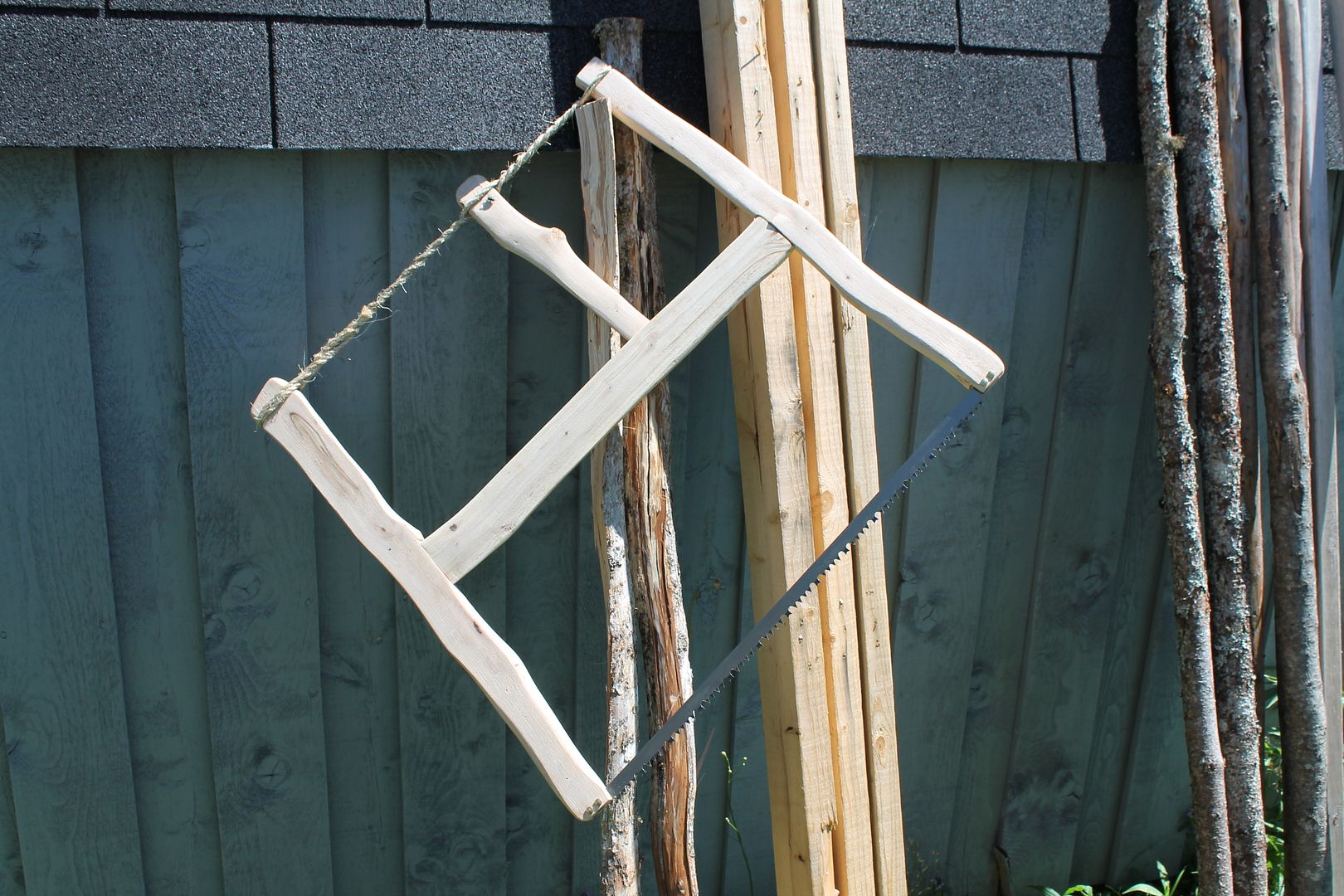
It is not the prettiest buck saw in the world. This guarantees it will not be stolen by medieval lute makers. But it has lots of extra height in the handles to allow for solid tensioning and the whole build cost $6Cdn and got me out for a walk. Now I can cut up the firewood at the medieval camp out without looking out of place. I sure wish I could find a manuscript with a blaze orange Silkie saw in it though...

Happy fabricating...
Cheers;
Then there is me...
So at far too many of these medieval reenactment events I get tasked with doing the firewood and I end up taking out my Silkie Big Boy saw complete with blaze orange handle and cutting up the firewood in a non-medieval way. Well at least with a non-medieval tool; it is not like I used a chainsaw or anything.
I decided I needed a medieval saw that was more appropriate and so started the research. Come to find out they have been around for ever and according to the manuscripts they look pretty much like a tensioned buck saw. Well that is a pretty easy build so I may as well make an adventure of it. I wanted my saw to look like the medieval equivalent of the saw owned by the guy that found a used blade abandoned after the black death and not the exquisite wood working tool owned by that master lute maker that will not help me do fire wood.
I was not interested in making a blade for scratch. Medieval saw blades had the common or "M" tooth pattern so are easy to make with a triangular file, but it would cost way more and take vast amounts of time to make one. I just picked up a 24 inch buck saw blade made by Stanley Tools. It was $6Cdn and will work far better on firewood and will never be used for lute making.
So let the adventure begin and lets try to do what medieval guys would do and it does not involve a trip to the B&Q or Home Depot. I went to the woods to look for a dead standing white ash tree.

Found some interesting things on my way into the hardwood stand

I found my dead standing Ash tree. It was tucked in behind a living ash tree that was considerably larger.

Hunter is pretty happy to be out on an adventure although less interested in doing any work.

Some days it would be nice to have a pack horse but on the positive side I can hike the few miles out and get rid of some winter fat. The 4-5 logs do not weigh much anyway and the extras will become tool handles. There may be a longbow in one of them at some point though.

So cut down to manageable lengths, the axe work begins.

All the free hand axe work is done by eye and low spots for curves are left until last when a flat surface sort of emerges from the wood.

After a bit of time, the wood begins to look like something approaching a piece of kiln dried store bough timber. A thickness plainer at this point would be a real bonus but I do not have one.

Bar clamped to the rail on the back deck I cleaned up the roughed out wood with a draw knife and then made some finer cuts and curves with a farrier's knife. I quite like them for debarking and using them as a scraper.

I cheated and used a power drill to pilot the holes for my joints (my auger is too big and is for making barns) and carved them out with a small carving set. They need to be loose or the tension will wreak havoc upon them. I also neglected to take photos of the process as it is tedious and not very enjoyable to me.
However after it was all carved out and the blade pinned in, I used a piece of sisal rope and back braided loops onto each end. The two loops go over one end and this gives two pieces of rope to slide the twirly stick through.

It is not the prettiest buck saw in the world. This guarantees it will not be stolen by medieval lute makers. But it has lots of extra height in the handles to allow for solid tensioning and the whole build cost $6Cdn and got me out for a walk. Now I can cut up the firewood at the medieval camp out without looking out of place. I sure wish I could find a manuscript with a blaze orange Silkie saw in it though...

Happy fabricating...
Cheers;
Last edited:

